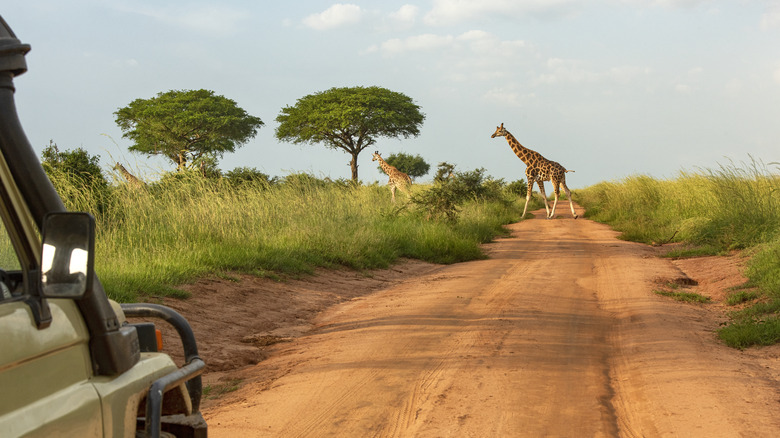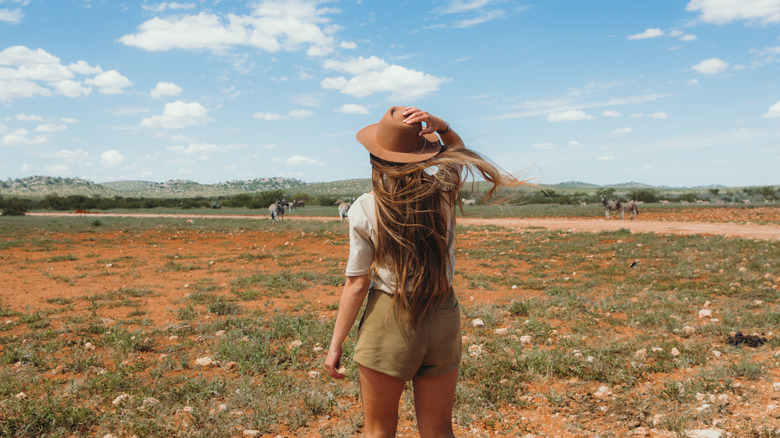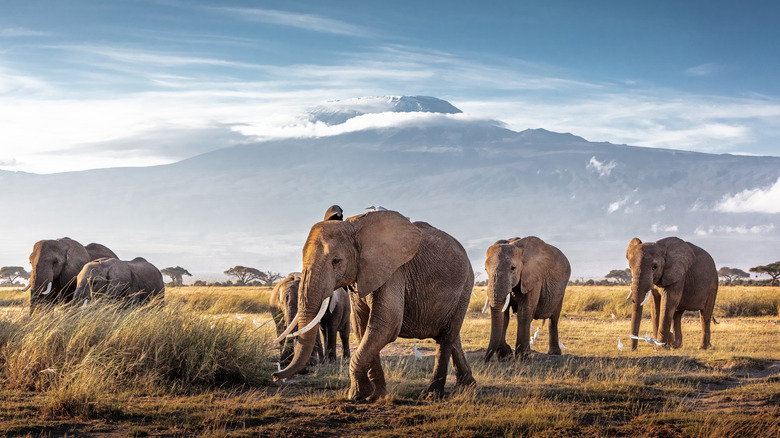The Unexpected Reason You'll Quickly Get Itchy Wearing This Color On An African Safari
When it comes to bucket list ticks, nothing is quite as epic as an African safari. With some of the most common nations for safari on the massive continent being Botswana, Kenya, Tanzania, South Africa, Namibia, and Zambia, the logistics for choosing the right safari for you and preparing for such an adventure naturally vary based on destination. However, there is one rule that remains true across the board. And as silly as it might sound, it comes down to what you're wearing.
You've likely seen pictures of people on safari in tan and olive green outfits. While maybe you assumed it was all about fashion trends, there's actually a little strategy behind why most folks wear light colors on an African safari. Have you noticed you seldom see anyone wearing black? This has to do with a little pesky bug called the tsetse, a gnarly fly that typically resides in sub-Saharan Africa. Tsetse flies are particularly attracted to dark colors, so it's safe to say you're better off leaving your black leggings, dresses, shorts, and tanks at home if you want to avoid a tsetse fly bite, which potentially comes with serious consequences.
What a tsetse fly bite could mean for you
Big whoop; you get bitten by a bug on an African safari. Just like many folks might get a few mosquito bites when in the Caribbean, these potential health hazards are simply a part of the travel experience, right? Well, sure, but there are plenty of reasons you want to avoid getting bitten by a tsetse fly.
The tsetse fly transmits a disease called African Trypanosomiasis. Sometimes referred to as "African sleeping sickness," there's no vaccine available for this disease, and appropriate to its name, symptoms include either insomnia or relentless sleepiness. Other typical symptoms are joint aches, fever, and headaches, and in extreme cases, confusion, behavioral changes, and dizziness.
The only things you should be bringing back with you from your African safari are photos and souvenirs, not an illness. To best prevent getting infected, it's not only black you'll want to avoid, but also bright colors, metallic fabrics, and dark blue. You can also ensure all exposed skin is covered, and though there's not a ton of proof that bug spray prevents bites, it certainly can't hurt to wear some.
Aside from what to wear, there are a few additional steps you can take to best prevent tsetse bites. Always check vehicles for these critters before getting in, as they are typically attracted to dust and movement. Speaking of which, avoid bushes during the day as they tend to lay idle there, and your presence could startle them which can lead to bites.
Wear this instead
So, now that we've covered what you shouldn't wear, let's talk about what you should you wear on a safari. Your best bets are neutral colors like grey and khaki-colored clothing. Olive green is never a bad idea as this will help you blend in with the surroundings. Wearing bright colors can alarm animals and cause them to hide from you, completely missing the point.
Above all, you'll want to stay comfortable. African safaris, while varying from destination to destination, generally mean long days on unpaved roads, in search of sighting as many animals as possible in their natural habitat. You don't need to over-prepare for the ruggedness by wearing things like hiking boots, and you don't need to over-prepare for glamping in safari lodges by bringing formal wear. When it all comes down to it, sticking with the color schemes, choose what makes you feel most comfortable.


